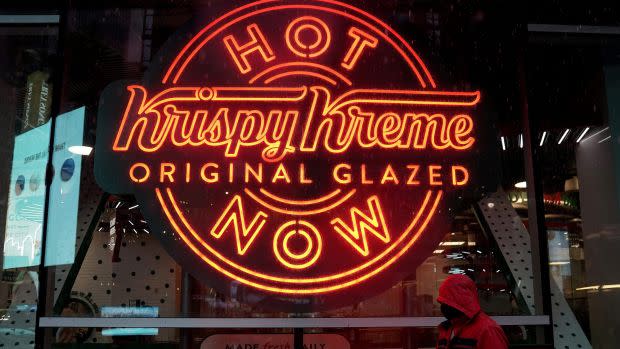Why are investors suddenly so eager for restaurant IPOs?

Amid a pandemic, a flurry of US restaurants are aiming to go public in what is shaping up to be the biggest year for IPOs since at least 2014.
Krispy Kreme went public (again) this month. PF Chang’s is rumored to be looking into an IPO, and California Pizza Kitchen is looking to go public or find a buyer. Meanwhile, salad chain Sweetgreen, a fast casual restaurant chain Portillo’s, and coffee chain Dutch Bros have all confidentially filed to go public. And Panera Bread, owned by JAB Holding Company, is reportedly considering going public (also for the second time).
Restaurant stocks traditionally haven’t been highly sought after among investors, and there hasn’t been much demand for new IPOs. The biggest public restaurant companies, McDonald’s and Starbucks, which together account for about 57% of all restaurant market cap, went public in 1987 and 1992, respectively, according to data from Aaron Allen & Associates, a global restaurant consultancy. In the past five years, only two restaurants went public on the New York Stock Exchange or Nasdaq.
But now that’s changing. Restaurant valuations look attractive and investor interest is high.
Restaurants coming back
With the economy opening up, Americans are looking to go out and eat, so there’s been a shift in spending from goods to services. Already, restaurant sales have reached pre-pandemic levels. To capitalize, restaurants are looking to expand their chains. For example, Sweetgreen, which is valued at $1.78 billion, said last year it is hoping to double its restaurants to 200 in the next three years. While retail stores have continued to shutter in the face of online competition, restaurants are still finding the opportunity to grow their physical spaces. “There’s still no Amazon disruptor for restaurants,” says Sean Dunlop, an equity analyst at Morningstar.
The pandemic impact has also been uneven for the restaurant industry. In general, fast food chains were resilient and able to adapt to the changing environment, investing more into curbside pickup and takeout. Chains including McDonald’s and Taco Bell are more profitable than before the pandemic, as they operate with less workers and offer fewer services, while they have benefitted from on infusion of government money, says Allen. The restaurants that struggled were ones located in urban centers and dependent on the office lunch hour.
Timing is right
With interest rates low, investors are gobbling up equities. Private equity firms, which tend to buy up restaurants in bundles, are looking to cash out by taking the companies public, says Allen.
While the demand for restaurants is hot right now, analysts say this is cyclical. Restaurants that have gone public—such as Krispy Kreme’s first attempt or Zoe’s Kitchen—have also faltered. That could explain the stampede to go public, as backers of restaurant IPOs are wary of investors losing interest.
“It’s almost like rushing for the gates because all it takes is one that goes particularly sideways and then it could close right back up,” says Dunlop.
Sign up for the Quartz Daily Brief, our free daily newsletter with the world’s most important and interesting news.
More stories from Quartz:
